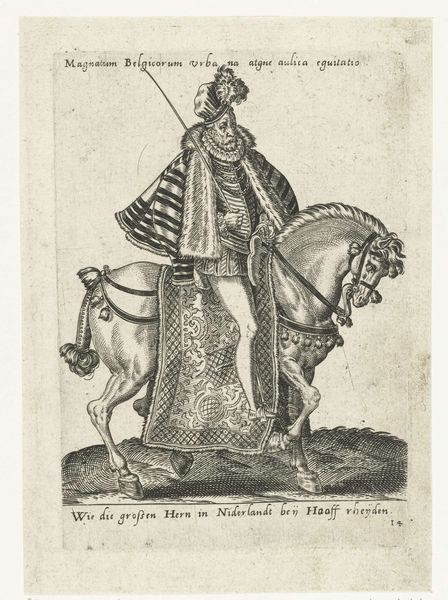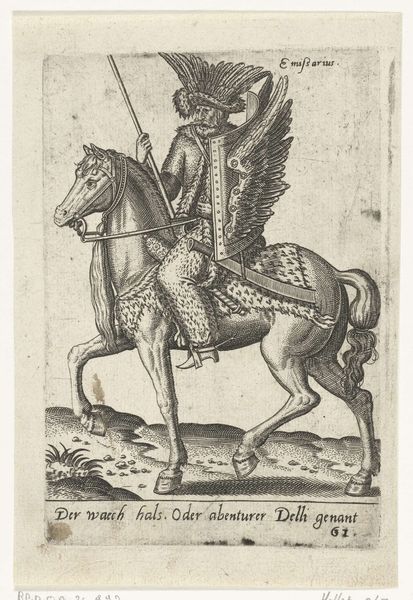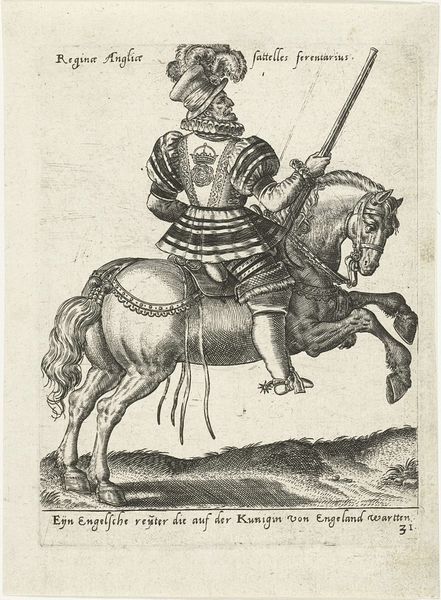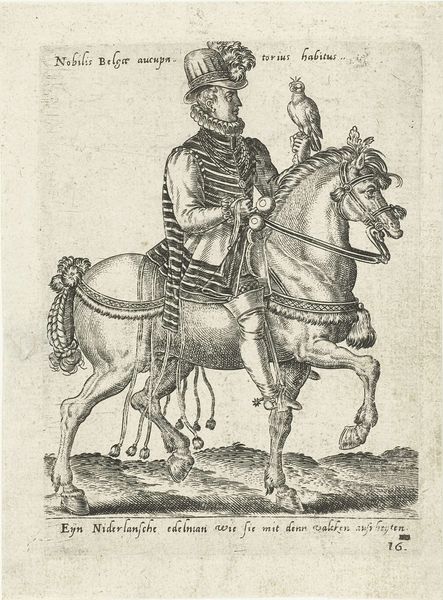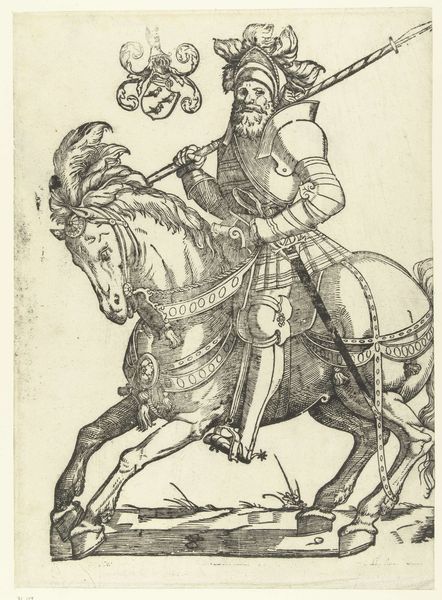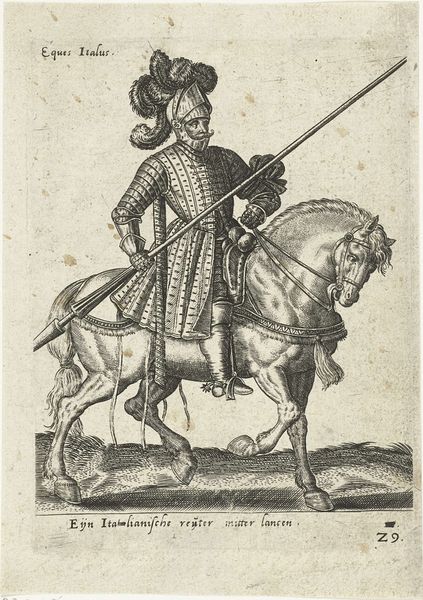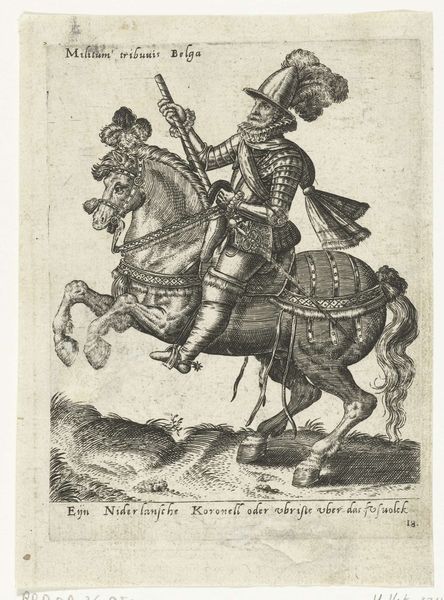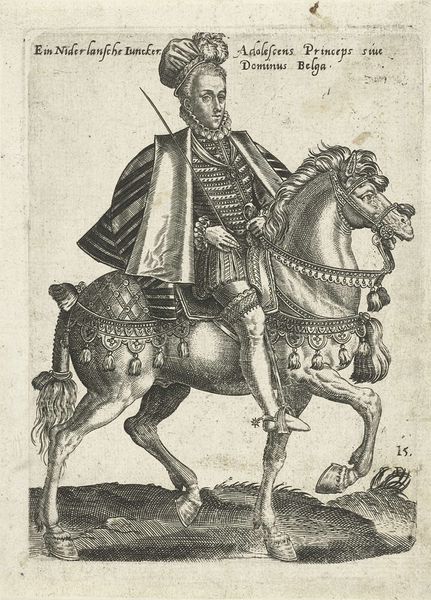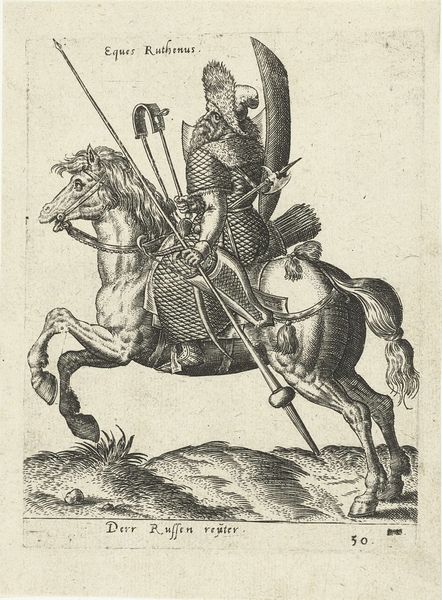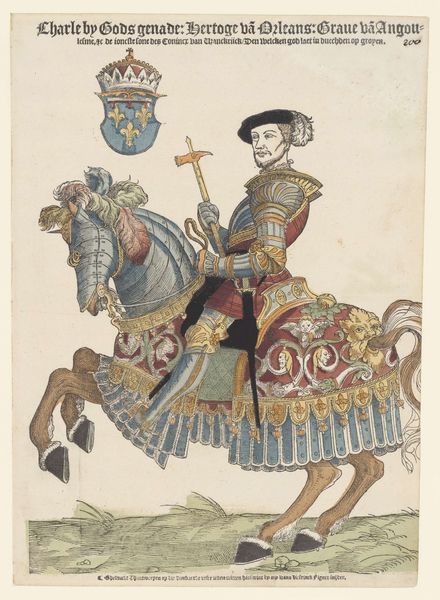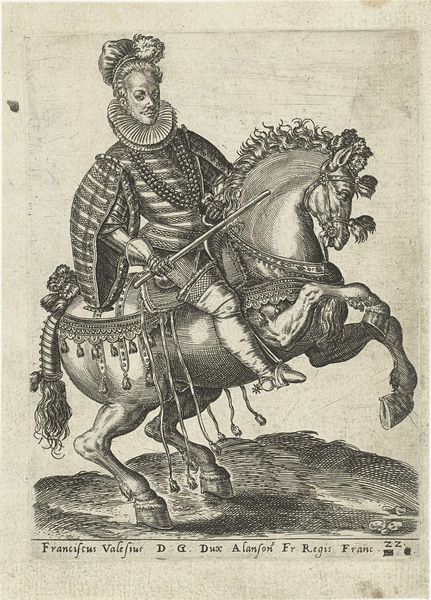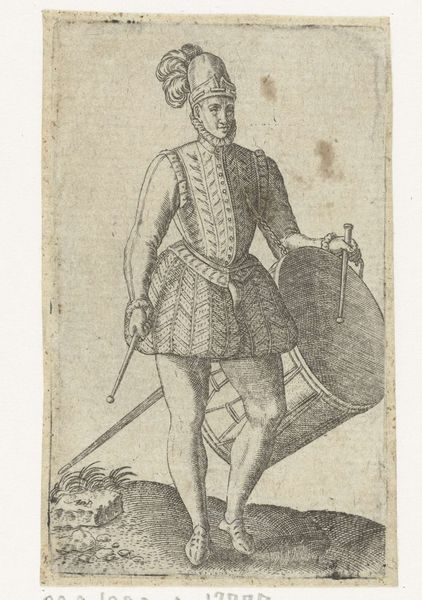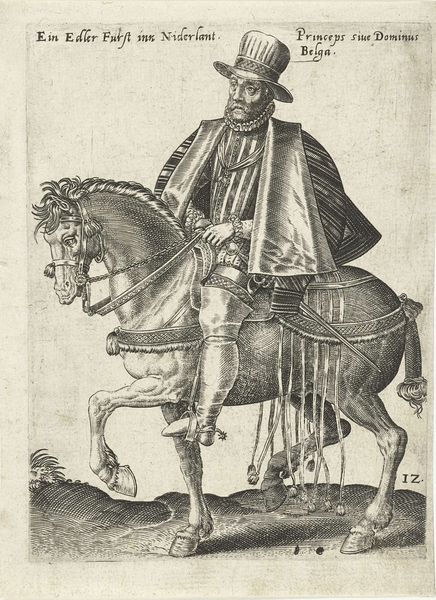
drawing, paper, ink
#
drawing
#
figuration
#
paper
#
ink
#
history-painting
#
realism
Dimensions: height 378 mm, width 274 mm
Copyright: Rijks Museum: Open Domain
Editor: This is a portrait of Reinout III van Brederode on horseback, rendered in ink on paper, attributed to Cornelis Anthonisz., and dated after 1545. What immediately strikes me is the sheer opulence depicted. The level of detail in the clothing and horse trappings seems excessive, almost performative. How would you interpret the imagery at play? Curator: The “excess,” as you call it, is quite deliberate. We must view this not just as a portrait, but as a potent display of power and legitimacy within the social and political context of the Dutch Renaissance. Reinout III was a figure caught between loyalty to the Habsburgs and the rising tide of Dutch nationalism. The meticulous rendering of heraldic symbols and luxurious garments –notice the lion rampant on the horse's blanket and the family crest– was carefully designed to project an image of established authority, a message as much for local rivals as for the Habsburg rulers themselves. What do you notice about the composition itself? Editor: I see! It is interesting that the figure is centrally positioned, seemingly emerging from a void. Could this placement also reinforce that "message of established authority?" Curator: Precisely. And it speaks to the broader use of portraiture during this period, not as simple likenesses, but as constructed personas meant to influence public perception and, ultimately, political realities. In effect, these are some of the earliest forms of political propaganda, where art plays a central role in shaping social and political discourse. Editor: That makes so much sense. I hadn’t considered the active role the piece played in shaping perception, not just recording history. It’s fascinating to consider how art acts as a tool for power. Curator: Indeed, recognizing this manipulation is crucial. Consider, who commissioned the piece? Where would it have been displayed, and for whom? Answering these questions helps us understand the work's original intent and its subsequent influence, adding layers of richness to what at first appears merely a regal portrait. Editor: It's changed my perspective entirely. Now when I look at art from this era, I'll be thinking about who is using this imagery and why. Thanks so much.
Comments
No comments
Be the first to comment and join the conversation on the ultimate creative platform.
